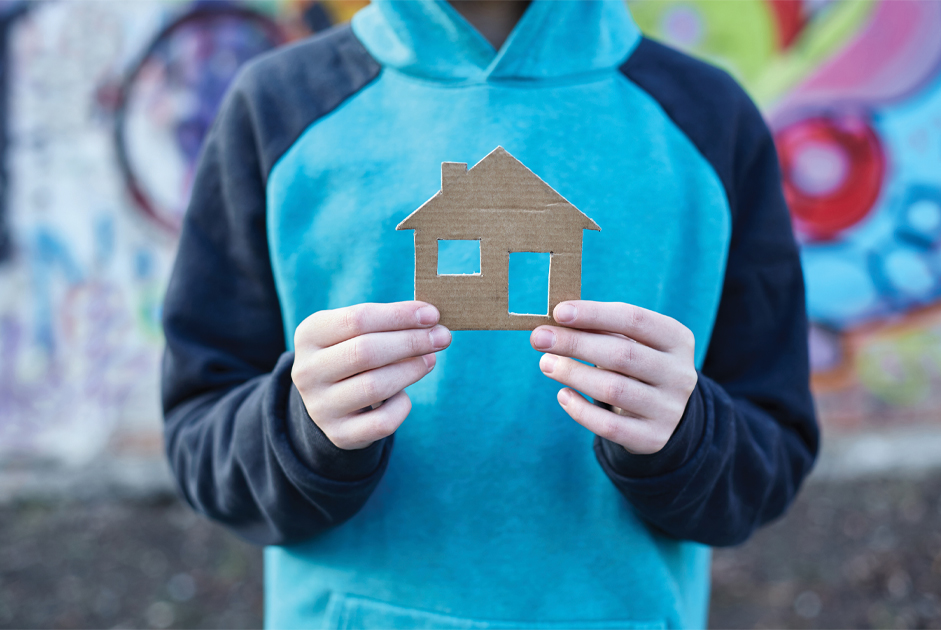Youth who face homelessness encounter more struggles than those who have housing security. From academic deficiencies due to poor attendance, to low self esteem resulting in mental health struggles, this group needs significant support. Sadly, as many as 2.5 million youth per year experience homelessness, the National Child Traumatic Stress Network reports. Along with losing their home, community, friends and routines as well as their sense of stability and safety, many homeless youths are also victims of trauma. While they are trying to survive, this group of youth are exposed to countless dangers with an increased likelihood of substance abuse, early parenthood, impulsivity, depression, posttraumatic stress disorder and a vulnerability to being trafficked. This November, the nation recognizes this problem. During National Homeless Youth Awareness month, all should become aware of these struggles, as well as what one can do to help them.
This month was created after realizing the vast numbers of homeless youth within the Los Angeles school district. Officially, on July 11th, 2007, the United States Congress established November as National Homeless Youth Awareness Month for the entire country. Since its formation, this resolution has been adopted by many national organizations and school districts across the country. The main goal is to encourage discussion pertaining to supporting initiatives to end homelessness among students, parents, district employees and community members. There are countless resources to help one determine how they can help this group. Read on regarding these different resources, and consider becoming involved in one capacity or another. A single individual can help this group not only during this month, but throughout the entire year, as well.
Resources for Community Involvement: If you would like your company, church or another larger organization to help youth who face homelessness, consider the following resources.
- National Alliance to End Homelessness: This group prevents and ends homelessness in the US through improving policy, building capacity and educating opinion leaders.
- StandUp for Kids: This group supports volunteers invited to go into the streets to find, stabilize and otherwise help homeless youth improve their lives. Other projects include programs in schools and via the internet dealing with deterring homelessness and providing resources.
- Projects for Assistance in Transition from Homelessness (PATH): PATH provides services to “people with serious mental illness, including those with co-occurring substance use disorders, who are experiencing homelessness or are at risk of becoming homeless.” These services include community based outreach; including mental health, substance abuse, case management; and some housing services.
Resources for Families Encountering Homelessness: If you and your family are experiencing homelessness or are concerned this may be on the horizon due to housing issues, consider the following resources.
- National Center for Homeless Education: This group collaborates with schools, service providers, parents and other interested stakeholders to ensure that children and youth experiencing homelessness can enroll and succeed in school. This group helps provide resources for parents who are living in temporary situations because of foreclosure. They can also manage questions about services their children can receive under the federal McKinney-Vento Act, a hotline, and local and state contacts.
- National Network for Youth (NN4Y): NN4Y Helps runaway, homeless and other disconnected youth. Programs include street based services; emergency shelter and transitional living programs; counseling; and social, health, educational and job-related services to more than 2.5 million youth annually.
Resources for Educators: For those who work within the education field, consider joining one of these groups to learn more about the advocacy work you and your school can do.
- National Coalition for the Homeless: Consists of a national network of people who are currently experiencing or who have experienced homelessness, activists and advocates, community based and faith based service providers and others committed to a single mission – to prevent and end homelessness while ensuring the immediate needs of those experiencing homelessness are met and their civil rights protected.
- National Association for the Education of Homeless Children and Youth Services: This group serves as the voice and the social conscience for the education of children and youth in homeless situations. It connects educators, parents, advocates, researchers and service providers to ensure school enrollment and attendance, and overall success for children and youth whose lives have been disrupted by the lack of safe, permanent and adequate housing.
Resources for Mental Health and Child Welfare Professionals: If your career is within this field, there are also a variety of resources your organization can utilize during this month and beyond.
- Bright Horizons Foundation for Children: This group focuses on brightening the lives of children, youth and families experiencing homelessness and other crises.
Runaway and Homeless Youth Training and Technical Assistance Center: Provides training, webinars, toolkits and tip sheets to assist professionals in improving their services for and building their capacity to effectively serve runaway and homeless youth.



















